Dublin, Ireland
I was born on Hatch Street in Dublin.
I never get tired of looking at Dublin doors.
I was born on Hatch Street in Dublin.
I never get tired of looking at Dublin doors.
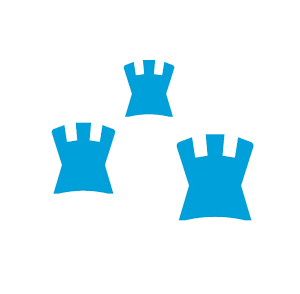
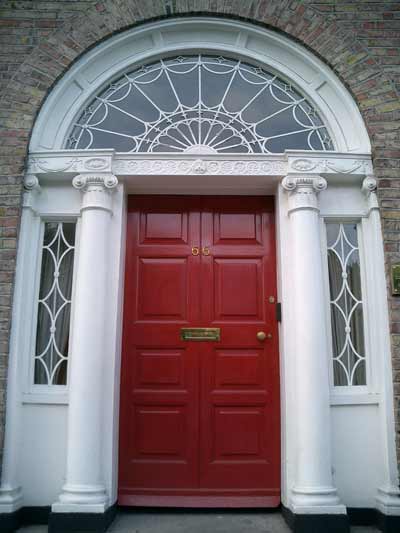
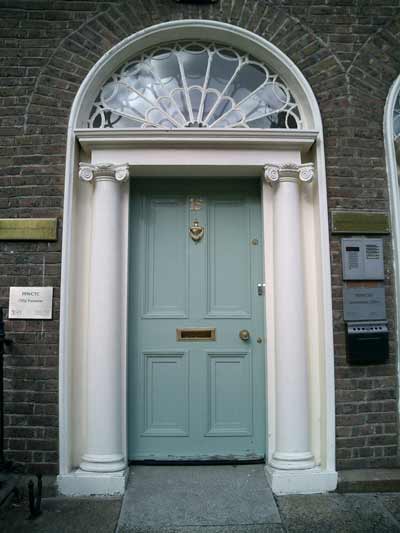
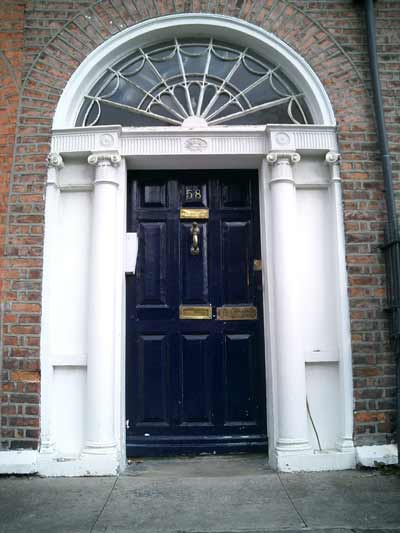
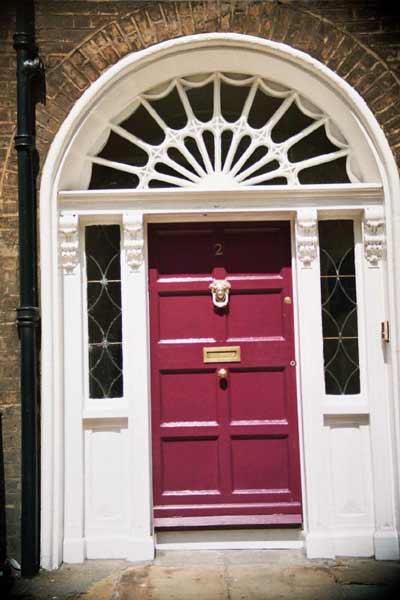
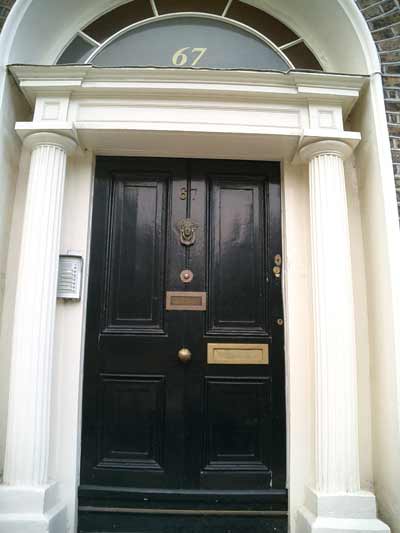
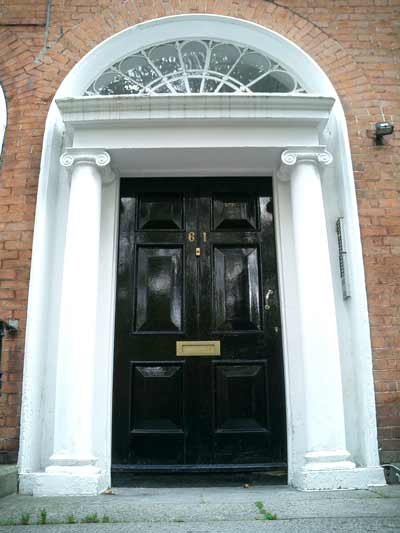
Dublin.
The Fair City, Strumpet City (a novel by James
Plunkett), Baille atha Cliath (Irish for "town of the hurdled fords"), Blackpool (Dubh linn from the Norse); however you want to call it, Dublin
is a wondrous, thousand-year-old, European capital city. Best seen on foot -
from Stephen's Green to Phoenix
Park, from Merrion Square to Parnell Square, or up and
down O'Connell Street and Grafton Street - most of Dublin can be walked in a
day. Split by the River Liffey into two halves (north and south), a true 'Dub'
is said to have been born between the two canals (the Royal Canal on the north
side and the Grand Canal on the
south side). "Beyond the pale" (i.e.,
outside acceptable behaviour) was the area outside
the realm of the former ruling Ascendancy, an area roughly bounded by the
embryonic Dublin Mountains.
|
|
|
|
|
|
Stephen's Green |
Merrion Square |
The Liffey |
The Grand Canal |
Art, architecture, and statues.
Dublin is a
capital city and has more than its fair share of art and old buildings. Francis Bacon was born in Dublin. His
studio is on display in the Hugh Lane Gallery (top of Parnell Square).
There is a Vemeer and a Carvaggio
in the National
Gallery (Merrion Square) and a
Spanish room with three Goyas. Look for the work of
Irish painters Jack Yeats and Paul Henry. The Tara Broach and Ardagh Chalice are on display in the National
Museum (Kildare Street). The Chester Beatty Library is
behind Dublin Castle. It's not a library, but rather the home to a collection
of exquisite illuminated manuscripts and Eastern artifacts. In high tourist
time, the Book of Kells in Trinity College can be a letdown. The Chester Beatty is the perfect
antidote. A longer but pleasant walk from the centre takes one to Collins
Barracks (decorative art) and IMMA (modern art) at the
refurbished Kilmainham Hospital (now also at a new
exhibition space at Earlsfort Terrace). Both are
great sites for an art or lunch outing. Public galleries are free. No need to
stay longer than you want.
|
|
|
|
|
|
Baggot Street |
Hugh Lane |
Chester Beatty |
Trinity College Dublin |
Dublin is famed
for its Georgian squares. Merrion Square is the best
preserved, but look for Fitzwilliam
Square, Parnell Square, and Mountjoy Square. Try
the Saturday tour of Government
Buildings that includes a tour of the taoiseach's
(prime minister's) office and cabinet rooms. The tour is free and on the hour.
A ticket is required and can be booked on the day in the nearby National
Gallery. George Bernard Shaw's house is well worth it for a look into the past,
circa 1900. The Victorian Kilmainham Gaol has an informative tour on the 1916 Rebellion. The
rebels were all executed there, including Patrick
Pearse, James Connolly, and Sean Heuston (now commemorated by the three main Dublin train
stations). The prison scenes with Noel Coward in The Italian Job were filmed there. The GPO or General Post Office is the spiritual centre of the Rebellion and
worth seeing for the Fifties interior and 1916 art work. The Spire outside
reflects a once and future proud Celtic confidence.
|
|
|
|
|
|
Fitzwilliam Square |
Government Buildings |
Pearse Station |
GPO |
For statues, Molly Malone is on Grafton Street, James Joyce on Henry Street, and
Michael Collins in Merrion Square. Other famous Irish
are dotted throughout, including Countess Markeweicz
in Stephen's Green (the first woman elected to Westminster, though as a Sinn Féin member she refused her seat), Big Jim Larkin on
O'Connell Street, and Patrick Kavanagh, cap in hand, on the bank of the Grand Canal,
among numerous others. Oscar Wilde
sits outside his parents' home in Merrion Square. You
will hear Dublin rhyming slang for many statues and is easily picked up: the
tart with the cart (Molly Malone), the hags with the bags (shoppers by the Haypenny Bridge), the flouzzi in
the jacuzzi, now replaced by the sculptural wonder of
the Spire of Dublin (or large flagpole, depending on your view), a.k.a. the "spike," "stiletto in the
ghetto," "rod to God," along with other unmentionables.
|
|
|
|
|
|
Molly Malone |
James Joyce |
Oscar Wilde |
Patrick Kavanagh |
The Irish language.
Cead mille failte is the traditional Irish welcome, meaning
"a hundred thousand welcomes." Uisce batha is "water of life," i.e., whisky (no 'e' in Irish whisky, though plenty of alcohol).
Street names have uppers and lowers. Aras
an uachtarain is
literally "the house of the upper one," where the upper one (president) lives
in Phoenix Park. Interestingly, Phoenix comes from fionn uisce meaning "fair" or "clear water."
There are no mythical birds, but plenty of deer rutting in the morning if
you're up early enough. The American ambassador's residence is there and an
obelisk dedicated to the Duke of Wellington, who was born in Dublin.
Government.
The Republic of Ireland has a bicameral parliamentary democracy with an
elected lower house (the Dáil,
pronounced 'doll' or 'doyle') and a mostly-appointed
upper house (Séanad). The head of state, the
president, is elected for seven years to a largely ceremonial position,
currently Michael D. Higgins in his second term. Micheál
Martin is the prime minister (taoiseach in Irish) since December 2024 as the leader of a
three-party coalition made up of Fianna Fáil (48 seats), Fine
Gail (38 seats), and 5 Independents. Sinn Féin (39) is the main opposition
party, followed by Labour
(11).
|
|
|
|
|
|
Micheál Martin Fianna Fáil |
Simon Harrus Fine Gail |
Mary Lou McDonald Sinn Féin |
Eamon Ryan Green Party |
Traditionally, Fianna Fáil is the party of Eamonn De Valera, who opposed the Anglo-Irish Treaty of
1921 and Fine Gael is the party of Micheal Collins,
who signed the treaty and in so doing sealed his fate, as he himself predicted.
The Treaty originally partitioned Ireland into the nine counties of Northern
Ireland (i.e., the province of
Ulster) and the twenty-three counties in the other three provinces (Connacht, Leinster, and Munster) of the Free State (officially called
Éire after 1937). Northern Ireland became six counties when three counties
immediately joined the South as prescribed in the Treaty's Boundary Commission,
and thus Ulster is technically not synonymous with Northern Ireland. In 1948,
the Free State became the Republic of Ireland and left the Commonwealth. Fianna Fáil and Fine Gael are
both right-of-centre parties, while Sinn Féin, the
Green Party, Labour, and independents are of varying
degrees to the left.
Drink.
Dubliners are
famed for their drink. Guinness, of course, is the drink of choice, drunk in
pints or halves and typically in rounds (no stutter steps at the door when it's
your turn). The
Gravediggers (a.k.a.
Kavanaghs in Drumcondra) reputedly
pulls the best pint. It is true that the water used to make Guinness once came
from the south-side Grand Canal. Conversation is preferred to piped-in music in
a few older pubs. Try The Palace Bar on Fleet Street (a
famed Irish Times hangout, including
the writer Flan O'Brien), Mulligans (the local in the
Irish sitcom Bachelors Walk), McDaids (where
writers Brendan Behan and Sean O'Casey traded the odd barb and tussle with the
poet Patrick Kavanagh.) Upstairs at Neary's is a
students' hangout. Downstairs at Peter's
is a quiet respite. The International is the scene of a
few impromptu Sunday sessions and the meeting place for The 1916 Rebellion Walking Tour,
hosted by Lorcan Collins and Conor
Kostick. Grogans is for the more
Bohemian. The U2-part-owned Clarence Hotel is an
elegant repose from the more touristy Oirish pubs of Temple Bar. Pop stars can occasionally be
seen in the former Octagon Bar (curiously renamed The Curious Mister). Session
or 'trad' music can be heard in Hughes (behind the Four Courts) or at the Cobblestone (in Smithfield).
Politician hangouts include Doheny and Nesbitt's and Toners
on Bagott Street (the only pub where a polished
William Butler Yeats was said to have entered, but left soon after seemingly
not amused), and the buttoned-down, upper-crust Shelbourne
beside Stephen's Green (free peanuts soften the blow). The drink atop the Guinness Storehouse sports the best view in
town. Late night at the Gaeity,
Café en Seine, or Renards
will keep the pints flowing.
|
|
|
|
|
|
McDaids |
The Clarence |
Toner's |
The Shelbourne |
Drunk /drʌŋk/
(adj.): locked, twisted, langered, pissed, (well)
oiled, waisted, sloshed, plastered, hammered,
buckled, (absolutely) fucked, flutered, socious, gargled, tattooed, shit-faced, wanked,
cabbaged, Mary Poppins, lamped, palatic,
out of my bin/out (off) your head/out of the box. In Irish, slainte means cheers.
To be sure, it's
hard to go wrong in an Irish pub, but beware of the old retort "going for one,"
which could mean one for the road, one for the door, one for the ditch, or d)
all of the above. Look out for the jazzed-up "official" James Joyce pubs,
complete with spelling and grammatical errors on a pukey
plaque. The master would be amused. His image and words are free to use in any
way one likes, now that family copyright expired in 2021.
Some good
walks.
If you like to mix
your words and drink, try the Dublin Literary Pub Crawl that
starts in the Duke. Well worth the
walk and talk and drink. The 1916
Rebellion Walking Tour starts and ends in a pub (The International), as did some in the actual rebellion. The Balloonatics Theatre Company are not
to be missed, seen on the streets of Dublin reading and enchanting every June
16, a.k.a. Bloomsday, the infamous day in 1904 when
Leopold Bloom went walking (and Joyce "met" his future wife Nora). Bring your
own flask and comfortable shoes. Don't fall for any after readings entirely in
Swedish, not nearly as fun as it sounds.
Food.
A few cheep and
cheerful places are Pizza Stop, down
the lane from Neary's (much better than the name
suggests), veggie Fresh on the top
floor of Powerscourt, and the internationally-flavoured Food Court
off Abbey Street, with buffet choices from around the world. The IFI has good food and loyalty bonus
points. The 101 on Talbot Street is
more upscale, but great for a theatre night out. Tante Zoës offers cool Cajun delights. Tolteca has the
best burrito in town. Wagamama
is great for a detox pick-me-up. FX Buckleys has the best steak in town
and is both amiable and well-priced.
|
|
|
|
|
|
Pizza Stop Chatham Lane |
IFI Eustace Street |
The 101 Talbot Street |
FX Buckley Grill Crow Street |
Traffic.
Look all ways and
don't expect drivers to stop. There is nothing fair about the roads in the Fair
City.
Musts.
The Chester Beatty (a two-story museum of prints, dress, and
manuscripts from around the world). The Poolbeg lighthouse for a great Dublin
Bay view (walk from Sandymount Strand along the pier
wall to the red lighthouse in Dublin Bay.) Newgrange on the Boyne is a neolithic passage tomb (the inside chamber is aligned to
the winter solstice and pre-dates the pyramids by 1,000 years).
Easy day trips and excursions.
Howth. Take the DART (Dublin Area Rapid Transit)
north and get out at the last stop. Fish and chips on the pier is an all-time favourite, though try a walk around the entire peninsula
for a longer outing. Sweeping views of the "snotgreen"
and "scrotumtightening" Irish Sea and Dublin Bay are
not to be missed. The
Summit Inn is a good point to aim for.
Sandycove. The James Joyce Tower in
Sandycove (where "stately and plump Buck Mulligan
came from the stairhead" to begin Ulysses.) Take the DART south to
Dun Laoghaire (Done Leary) and walk to Sandycove.
Birr Castle if you like
astronomy, where the former world's-largest reflecting telescope can still be
seen. Weekends to Kilkenny
(arts), Galway (oysters, Irish
music, races), Cork, Kerry, Derry, Belfast, .... Check out Peter Lynch's excellent Rambling Round Ireland for ideas.
Odds and sods.
Postal codes: even
on the south side, odd on the north side. D2 is the city centre south of the
river, D1 north of the river. The LUAS: not an acronym, Luas means "swift" in Irish. Some
say it means "slow." Finnegans Wake does not have an apostrophe and
begins as it ends: "riverrrun, past Eve and Adam's
from swerve of shore to bend of bay, brings us by a commodious vicus of recirculation back to Howth
Castle and Environs."
Dublin names.
Dubblenn, Doveland, Dablena [various Dublin names in Finnegans
Wake]
By any other name.
A walking town: Guinness Brewery, IMMA at Kilmainham
Hospital, Phoenix Park, Georgian squares, galleries, along the canals, the Liffey, Sandymount strand. Try to
catch Pat Liddy
hosting one of his always excellent walking tours.
A literary town: Gulliver's Travels, The
Importance of Being Earnest, Dubliners,
Ulysses, Finnegans Wake, Strumpet City, The Plough and The Stars, Juno and The Paycock,
Playboy of the Western World, The Stolen Child, Pygmallion, Arms and The Man, At-Swim Two
Birds, Waiting for Godot, Krapp's Last Tape,
The Borstal Boy.
A writer's town: Jonathan Swift, Oscar Wilde, James Joyce,
Sean O'Casey, John Millington Synge, William Butler Yeats, Bram Stoker, George
Bernard Shaw, Flan O'Brien, Samuel Beckett, Brendan Behan, Patrick Kavanagh, Roddy Doyle, Edna
O'Brien.
The writers do
the talking.
Oscar Wilde
I'm dying beyond
my means. (Death bed quote)
I can resist
everything except temptation. (Lady
Windermere's Fan)
Charity, dear Miss
Prism, charity! None of us are perfect. I myself am peculiarly susceptible to
draughts. (The Importance of Being Ernest)
In America, the
young are always ready to give to those who are older than themselves the
benefit of their inexperience.
If one could only
teach the English how to talk and the Irish how to listen, society would be
quite civilized. (An Ideal Husband)
Jonathan Swift (Dean of St. Patricks)
Satire is a sort
of glass, wherin beholders
do generally discover everybody's face but their own. (The Battle of the Books)
We have just enough
religion to make us hate, but not enough to make us love one another.
George Bernard Shaw
There are two
tragedies in life. One is not to get your heart's desire. The other is to get
your heart's desire. (Man and Superman IV)
He who can, does. He who cannot, teaches. (Maxims for Revolutionists)
Newspapers are
unable seemingly to discriminate between a bicycle accident and the collapse of
civilization.
He knows nothing;
and he thinks he knows everything. That points clearly to a political career.
Sir Boyle Roche: (18th-century Irish parliamentarian and
author of many Irish bulls--a contradictory maxim.) It was Sir Boyle who made
the startling discovery that "a man differs from a bird in not being able to be
in two places at once."
I smell a rat; I
see him floating in the air; but I'll nip him in the bud.
Along the untrodden paths of the future, I can see the footprints of
an unknown hand.
The country is
overrun with absentee landlords.
They would cut us to mince meat and throw our
bleeding heads on the table, to stare us in the face.
I tell you, the cup of old Ireland's misery
is overflowing; aye, and it is not full yet.
On Ireland.
The Irish prefer
drink to food because it interferes less with conversation. Oliver Gogarty.
Ireland is a
country bursting with genius but with absolutely no talent. Hugh Leonard
An Irish atheist
is one who wishes to God he could believe in God. J. P. Mahaffy
An Irishman is
never at peace unless he's fighting. Brendan Behan
In Ireland it is
considered bad taste to be serious. Sean O'Faolain
On Drink.
'The Workmans Friend'
When things go
wrong and will not come right,
Though you do the best you can,
When life looks black as the hour of night -
A PINT OF PLAIN IS YOUR ONLY MAN.
When money's tight
and hard to get
And your horse has also ran,
When all you have is a heap of debt -
A PINT OF PLAIN IS YOUR ONLY MAN.
When health is bad
and your heart feels strange,
And your face is pale and wan,
When doctors say you need a change,
A PINT OF PLAIN IS YOUR ONLY MAN.
When food is
scarce and your larder bare
And no rashers grease your pan,
When hunger grows as your meals are rare -
A PINT OF PLAIN IS YOUR ONLY MAN.
In time of trouble
and lousey strife,
You have still got a darlint
plan
You still can turn to a brighter life -
A PINT OF PLAIN IS YOUR ONLY MAN.
Brian Nolan (Flan
O'Brien)
My favourite bull.
A farmer who sold
a pig at a fair wasn't disappointed at the low price it fetched. "Well, I
didn't get as much as I expected, but then I didn't expect I would," he said.
Check out A
Life in Words for more.
The beginning of Ulysses.
1. Telemachus
Stately, plump
Buck Mulligan came from the stairhead, bearing a bowl
of lather on which a mirror and a razor lay crossed. A yellow dressinggrown, ungirdled, was
sustained gently behind him by the mid morning air. He held the bowl aloft and
intoned:
-- Introibo ad altere Dei
The end and beginning of Finnegans
Wake.
riverrrun, past Eve and Adam's from swerve of shore to bend of
bay, brings us by a commodious vicus of recirculation
back to Howth Castle and Environs.